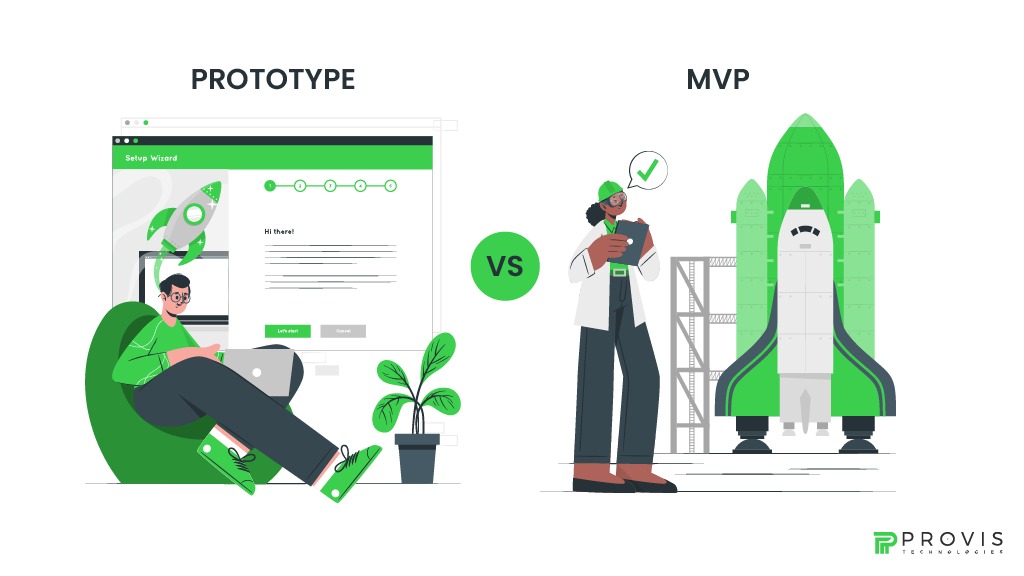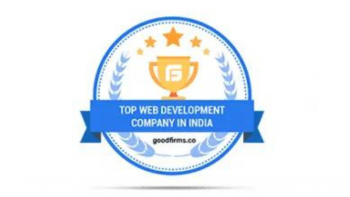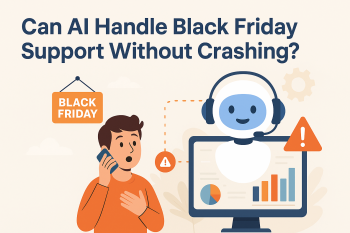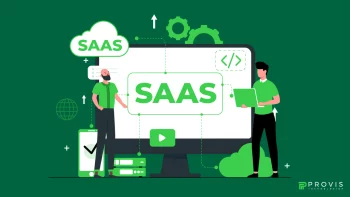Do you know only 0.5% of mobile apps get successful, leaving 9,999 out of 10,000 apps getting failed? Yes, as demoralising as this statistic sounds, it is a true fact.
A major reason behind the failure rate being so high is not validating your product from the market before launching the final product.
That’s why Provis Technologies, the Best SaaS Development Company, emphasizes the importance of developing a prototype or an MVP first to test your idea. So, if you also have a great idea in mind, it’s high time you focus on creating a prototype or an MVP and check its demand in the market!
But, should you focus on a prototype for your product or build an MVP first?
If you are also someone who is confused between a prototype and an MVP and can’t decide which is better for your product, this blog is for you.
This blog will break down MVP vs prototype and make it easy for you to make a firm decision. So, without any further ado, let’s get started!
What is a Prototype?
A prototype is an early version of a product which is used to check the potential of the product. Simply put, it is a rough draft of an idea.
Understand this with an example –
Let’s say you are building a fitness app. Isn’t it a good idea to first create a basic version of your app with minimal features and check its potential before you invest all in it? That basic version with minimal features is known as a prototype.
The aim behind a prototype is to check if the idea works. A prototype serves as a model for potential investors and teams to check the capabilities of the product and test the waters.
Now that you have understood what a prototype is, it’s time to understand some of the key features —
- Flexibility: A prototype, being a basic version, is quite easy to change and refine based on the feedback received.
- Visual representation: A prototype gives developers a visual representation of the design and layout of the product.
- Team collaboration: A prototype helps everyone on the team to understand the idea better and be on the same page.
Now, if you are wondering “how does the prototype look like?” – A prototype can be anything from a paper sketch to a digital product.
What is an MVP (Minimum Viable Product)?
Similar to a prototype, an MVP or minimum viable product is also a basic version of a product that gets the job done. It’s more of a core idea shaped into a basic product functional enough to meet the demands of users.
MVP’s main purpose is to test the market, check for the idea’s credibility and understand what’s missing and what needs improvement. All in all, it helps businesses to get real world feedback without spending millions on complete development.
Let’s understand what does MVP mean with an example –
If you want to develop a fully functional food delivery app, an MVP of your product will be a basic app with simple features such as menu, restaurant location and delivery tracking. However, there will not be any advanced functions such as AI recommendation or referral programs.
Talking about the key features of an MVP –
- User-focused: An MVP is specially built for early adopters of a product or service who want to test and provide crucial feedback.
- Scalability: As an MVP serves as a foundation product, there’s a lot of scope for further updates and improvements.
- Mitigates risk: An MVP decreases the risk of efforts and investment going to waste as there’s no complete development and businesses get quick access to the market.
MVP vs Prototype: What’s the difference between a Prototype and an MVP?
Of course, both prototype and MVP are initial development stages of a product with basic features. So, are they completely the same? Certainly not! There is a big difference between prototype and MVP when it comes to goals, development time and cost, level of functionality and target audience.
Let’s understand prototype vs MVP:
| Aspect | Prototype | MVP (Minimum Viable Product) |
| Goals | Tests feasibility, design, and functionality. | Validates market demand and gathers user feedback. |
| Development Time | Quick and low-cost. | Longer and requires a little more investment. |
| Functionality | Basic or non-functional (may just be mockups). | Fully functional, solving the core user problem. |
| Design | Focuses on user interface and experience. | Focuses on usability and performance. |
| Target Audience | Investors, internal teams, or stakeholders. | Real users or early adopters in the market. |
To break it down further with an example —
Let’s say you are building a fitness app.
The prototype for this app may only include basic designs, layout and clickable screens. This will allow developers to check how users are navigating the app. For instance, moving from booking a class to paying. In a nutshell, the prototype will help in checking the design and identifying any issues in the use of the app.
On the other hand, an MVP for the same app would really allow users to interact with the app, book classes, pay and provide feedback. It will be presented in the market with all minimal features only.
MVP vs Prototype: Choosing Between Prototype and MVP in 2025
Okay, you have a great idea in your mind. But the question you are stuck with is whether you start with a prototype or go a little further and build an MVP. There are a few key considerations if you want to know the answer —
What stage is your product at?
If you are still at the very initial stage of your product development, i.e., brainstorming and refining the foundation idea, build a prototype. It’ll help you check the design and basic functionality, allowing you to get a bigger picture of the final product.
But, if you are already confident in the concept and are ready to roll it out to real users, building an MVP is a better option. It’ll help you build confidence in your product with market validation.
What’s your budget?
As prototypes are the simplest version including only visuals and basic interaction features, they are generally cheaper as compared to MVPs.
How much time do you have?
How much time do you have till you finally present your product to the market? A prototype is a great option to quickly present your idea to the investors. However, if you want quick entry to the market and get feedback, go for an MVP.
What’s your purpose?
Do you want to show your idea to the investors and stakeholders or want real users to give feedback on your product? Go for a prototype if you seek the first option and an MVP for the latter.
What are the Benefits of Building a Prototype and MVP?
From our discussion so far, one thing is clear – both prototype and MVP are beneficial for developers. Let’s recall some of the key benefits offered by prototypes and MVPs —
Advantages of Prototyping
- Faster development time: As prototypes are not full-scale developed versions and just early stage basic drafts, they save time and allow quick testing and revisions. Eventually, making the development process faster.
- Better understanding of the product: Sometimes, your stakeholders and team may not be able to understand your idea and vision properly. However, a prototype significantly helps in visualising the idea, making it easier to understand.
- Secure funding: A prototype is a great tool if you want to properly convey your idea to the investors and get investments for your product.
- Improves team collaboration: Once a prototype is completed, the development team also aligns on the same page and works more effectively.
Advantages of an MVP
- Quick access to the market: By focusing on just the core features of a product, an MVP allows developers to quickly show the product to the market and check its potential.
- Real-world feedback: Getting real feedback before you launch the final product in the market is really helpful in refining your product.
- Data-Based Decisions: Once you get your MVP out in the market, you can get real user data from that and make informed data-backed decisions.
- Check market demand: An MVP allows you to check if your product has a demand in the market or not. Something really vital to know if you are bringing something new.
Conclusion
Final words on the MVP vs prototype debate — Be it a prototype or an MVP, both are an essential development step before you launch your final product in the market.
At last, the decision to choose between a prototype and an MVP completely depends on you and the phase your product is in!
FAQs
1. Which comes first, a prototype or an MVP?
A prototype is the very first development stage where the idea of a product gets visualised. IT allows us to check the design and layout of a product.
2. What does MVP mean?
An MVP is a basic version of a product with only core features. It allows businesses to get real-world feedback and refine it before launching the final product.
3. Which one costs more, Prototype or MVP?
A prototype, being just a basic draft with visualization and interactive features, usually costs less as compared to an MVP.
4. Is a prototype helpful in attracting investors?
Indeed, a prototype allows investors to clearly understand your vision behind a product and hence, gain investments.
5. What is the target audience for a prototype?
The main audience for a prototype is investors, internal teams, or stakeholders.
Written By
Author's Picks
- Why is 2024 a Great Year to Start Your E-commerce? E-commerce Trends 2024 | E-commerce in 2024
- 27/02/2024
- What is Micro SaaS & How to Build a Micro SaaS in 2025
- 25/02/2025
- What is WooCommerce: Features, Setup Guide, and Expert Tips
- 17/12/2024
Categories
- AI for Startups
- AI in Web Development
- AI Integration
- AI Platforms
- AI Prompt
- AI Tools
- AI Trading Software
- Android App
- Android vs iOS Development
- Angular
- API
- API Development
- App
- app development
- App Idea
- App User Feedback
- Application
- Artificial Intelligence
- Audit Services
- Automotive Industry
- Awards and Recognition
- Business Consulting
- Business Website
- Chatbots
- CRM
- CRM for Financial Advisors
- Custom CRM
- Custom SaaS
- Custom Website
- Customer Service
- dashboard design
- Developing a Mobile App
- Digital Business
- E-commerce
- EMR Integration
- Finance
- Financial Advisors
- Financial Advisors
- GIT
- Health Insurance
- iOS App
- iOS App Development
- IoT Mobile App Development
- IoT Platforms
- IT Audit Services
- IT Consulting
- IT Strategies
- Java Development
- Laravel
- Lean Canvas
- Learning Management System
- Logistics Apps
- Mobile App Development
- MVP
- Native App
- News Aggregator Site
- OTT
- Outsourcing IT
- Payment Gateway
- predictive analysis
- Product Launch Strategy
- Progressive Web App (PWA)
- Prototype
- Recommender Systems
- Ruby
- SaaS
- SaaS Application
- SaaS Business
- SaaS Company
- SaaS Development
- SaaS Product
- SaaS Project
- Sales Funnel
- SEO
- Shopping Cart
- Software Development
- SSL and TLS
- Startup Checklist
- Technology
- Tetradic Color Scheme
- UI/UX Design Company
- Unit Testing
- User Flow
- User Testing
- Web Development
- Web Performance Optimization
- website Maintenance Services
- Website Migration Service
- Website Speed Optimization
- WooCommerce
- WordPress





